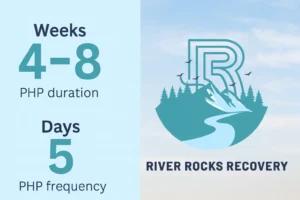I used to lie awake at night, watching him drift—eyes unfocused, tone tight, laughter gone. I’d whisper, I don’t know him anymore. I felt powerless.
Then he entered a partial hospitalization program at River Rocks Recovery, and things began to shift. It wasn’t magic. It wasn’t perfect. But it was real progress. If you’re loving someone who’s actively using, this might be what comes next.
In this post, I’ll walk you through what PHP is, how it works, how I saw its effects, and how you, as a partner, can hold hope without losing yourself.
(We serve Middletown, Ohio, and areas nearby—including Monroe and West Chester—so if you’re “looking for partial hospitalization program in Monroe, Ohio” or in West Chester, Ohio, you’re in region.)
What Exactly Is a Partial Hospitalization Program?
A partial hospitalization program (PHP) is structured, intensive care during daytime hours without requiring overnight stay.
Participants attend therapy, medical check-ins, groups, workshops, and support sessions—then return home every night. It’s between inpatient hospitalization and standard outpatient care.
At River Rocks Recovery, our PHP offers daily therapeutic support while letting your loved one keep tether to home, routine, and relationships. Learn more about it here: River Rocks PHP.
PHP gives someone more than weekly therapy—but not the shock of leaving everything behind.
Why PHP Might Work When Other Treatments Didn’t
We tried so many things. Outpatient therapy. Weekend rehab. Self‑help groups. He’d get a spark. We’d hope. And then relapse. It felt like every new attempt just reset the cycle, making us both more discouraged.
What made PHP different:
- Consistency in intensity: Daily accountability builds momentum.
- The safety net of support: Instead of lapsing between weekly sessions, he had help in those tricky hours.
- Peer energy: Being with others in the fight gave him less isolation, less shame.
- Medical oversight: Physical and mental symptoms monitored so small signs don’t become crises.
- Therapeutic variety: Not one kind of talk therapy. Groups, trauma work, relapse prevention, life skills.
PHP doesn’t promise perfection. It promises structure and support when someone is fragile—especially when outpatient care has already failed.

What a Day in PHP Looked Like for Him
From what he shared (and what I glimpsed), a day in PHP went something like this:
- Morning check-in: vital signs, mood, medication, or assessment
- Group therapy: exploring trauma, triggers, coping
- Individual therapy: personal work—what he avoided, what hurt
- Workshops: life skills, stress management, relapse prevention
- Lunch break, then afternoon sessions
- Evening wrap-up: reflection, planning, handoff home
Then he came home. We ate dinner. He rested. He told me small things: he cried today. He named a fear. He didn’t run.
PHP allowed him to heal in the daylight—while still sleeping in his own bed at night.
The Shift Wasn’t Explosive—It Was Subtle
You don’t always see the turn on day one. Sometimes healing is in the small fractures. But I did notice:
- His tone softened. He spoke less from defense.
- He began apologizing for things he didn’t realize he’d done.
- He didn’t vanish when things got hard. He texted. He asked.
- His eyes looked less hollow. Less distant.
- He slept better some nights.
- He started to dream again—about travel, workouts, music.
He didn’t transform overnight. But layer by layer, he started reclaiming pieces of himself.
My Role Wasn’t to Fix—It Was to Support (Without Losing Me)
In that same season, I messed up. I tried to control. I tried to manage. I burned out, resentful, drained.
What I learned:
- I can’t heal someone else—but I can show up.
- Boundaries are love. Saying “I can’t enable” or “I need my peace” doesn’t mean I stop caring.
- I needed my own support—even therapy, friends, rest.
- I let go of needing proof. Healing is messy. It doesn’t always come with grand gestures.
You don’t surrender your life in the name of love. You anchor it.
Common Concerns That Held Me (And How We Tackled Them)
| Concern | What I Worried | How It Was Addressed |
|---|---|---|
| What if he relapses mid‑program? | I feared a full collapse would undo everything | PHP’s clinical team watched for red flags, adjusted intensity, and intervened—rather than letting relapse spiral |
| Will PHP change who he is? | I worried he’d lose parts of himself I love | Good treatment doesn’t erase identity — it clarifies it. He’s still him, but less hidden |
| What’s the cost—time, financial, emotional? | PHP is demanding; we’d lose weekends, free time | We weighed cost vs possible collapse. The alternative (doing nothing) felt more costly |
| Can he maintain relationships, life, job? | I didn’t want him to pull away again | PHP’s daytime structure gave enough consistency to keep connection and continuity |
| What if he doesn’t complete it? | Failure haunted me | I learned that starting is courage—completion is not the only mark of success |
These concerns don’t vanish. But they soften with structure, transparency, and compassionate support.
How to Know If PHP Is Right for Your Partner
Ask:
- Is his substance use escalating—cravings, frequency, secrecy?
- Have outpatient therapy or other attempts declined in effect?
- Does he express willingness—frustration with cycles, longing for a different life?
- Is he able to leave his home during the day?
- Do you feel isolated, scared, exhausted supporting him alone?
If yes to some of these, PHP is worth exploring. It’s especially crucial if outpatient care has not been enough.
In our region, people often search for PHP in Monroe, Ohio or PHP in West Chester, Ohio if they’re outside Middletown. River Rocks serves these areas.
FAQs: Partial Hospitalization Program & What to Expect
What makes PHP different from inpatient rehab?
Inpatient (residential) requires overnight stay. PHP offers the same therapies, structure, oversight—but lets participants return home each night. It’s more flexible for daily life while still intensive.
How long does a PHP last?
PHPs typically run 4–8 weeks, but the duration can flex depending on needs. Some stay in PHP while stepping down to outpatient care gradually.
Is PHP safe if he’s actively using?
Yes—with clinical supervision. PHP programs screen medical or mental health risks, stabilize as needed, and maintain safety protocols for people who may still be using.
Will he lose his autonomy or identity?
Not if the program is ethical. A good PHP doesn’t force identity erasure. It allows someone to be flawed, human, messy—and still worthy of recovery.
Can PHP work alongside medication-assisted treatment?
Absolutely. If he requires pharmacological support, PHP can incorporate that. Treatment should be integrated—therapy, medical care, medication, life skills.
What happens after the program ends?
PHP often transitions into intensive outpatient or outpatient therapy. The idea is not abandonment—it’s gradual tapering of support, with continuity in care.
Why I Say “Yes” to Hope Again
When he came home at night and told me what he felt—something shifted in me.
That night, I didn’t just hope. I believed. I believed in his capacity. I believed in a path forward.
A partial hospitalization program gave him scaffolding. It didn’t make him perfect. It gave him a fighting chance.
If you’re reading this—feeling terrified, depleted, maybe skeptical—remember: small consistent support can break through walls. Love doesn’t always save someone. Sometimes structure does. Sometimes boundaries do. Sometimes being willing to let your person try something serious changes everything.
It’s Okay to Hope—Even When You’ve Been Scared Before
Call (888) 905‑6281 to learn more about our partial hospitalization program services in Middletown, Ohio. You deserve to see him heal—with support, dignity, and possibility.




























